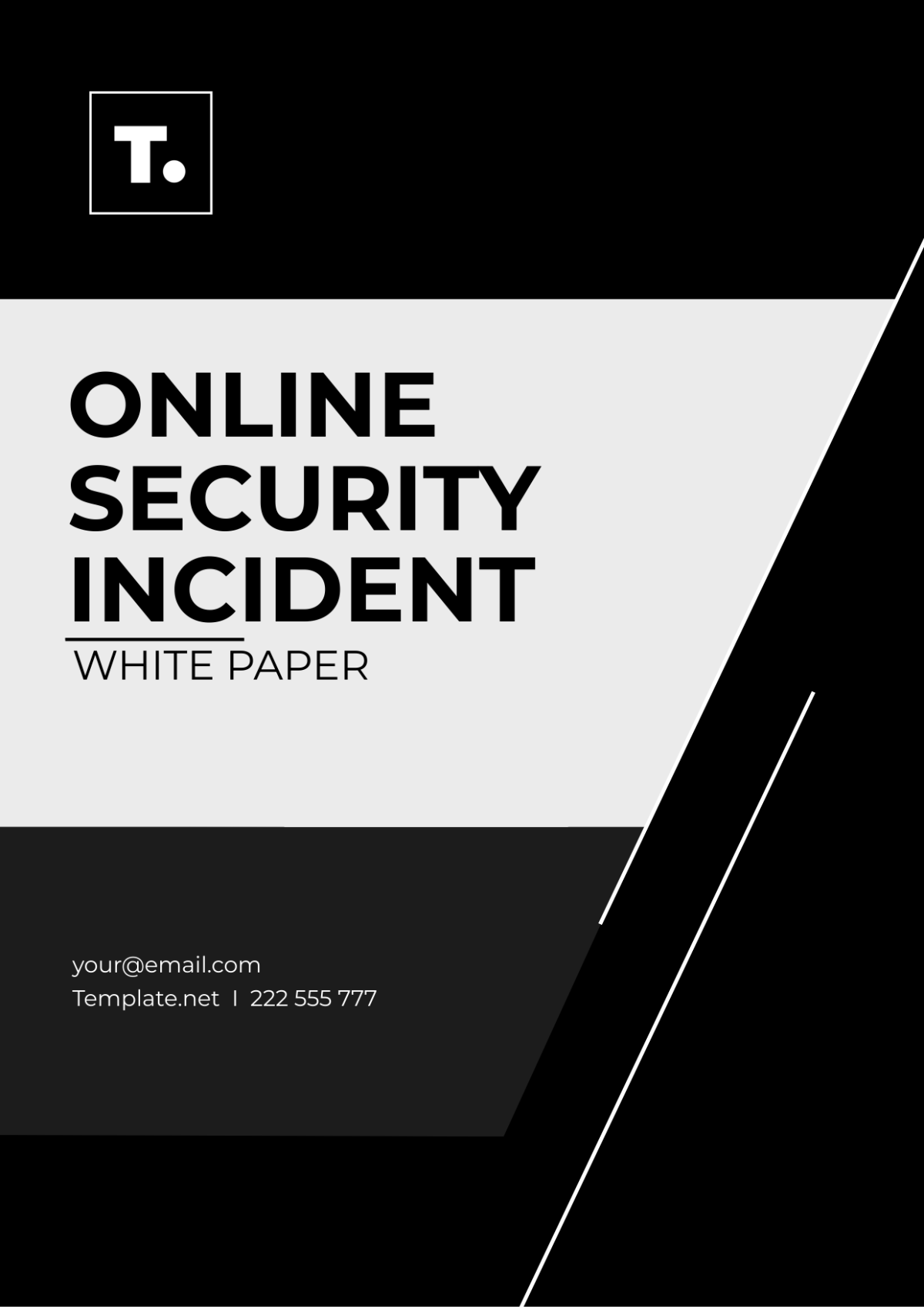Online Security Incident White Paper
Online Security Incident Response Strategies
White Paper Prepared by: [Your Name]
Organization: [Your Company Name]
Date: [Date]
Department: [Your Department]
I. Executive Summary

The executive summary provides a comprehensive overview of the key insights and recommendations outlined in this white paper, focusing on addressing online security incidents and their implications.
Problem Statement: Identifying the increasing prevalence and severity of online security incidents.
Objective: Outline the goals of the white paper and its intended impact on enhancing online security measures.
Key Findings: Highlighting the main insights derived from research and analysis.
Recommendations: Offering practical solutions and strategies for preventing and responding to online security incidents effectively.
This white paper, prepared for [Your Company Name], aims to raise awareness about the growing threats to online security, providing valuable insights and actionable recommendations for mitigating risks and safeguarding digital assets.
II. Introduction
This section sets the stage for understanding the significance and scope of online security incidents.
Background: Providing context on the evolving landscape of cyber threats and online security vulnerabilities.
Scope: Defining the focus areas and objectives of the white paper.
Purpose: Clarifying the intention to provide guidance and solutions for enhancing online security measures.
III. Understanding Online Security Incidents
Providing an in-depth analysis of online security incidents, including their types, causes, and impacts.
Types of Incidents: Identifying common types of online security incidents, such as data breaches, malware attacks, phishing scams, and DDoS attacks.
Causes: Exploring the root causes and contributing factors of online security incidents, including human error, software vulnerabilities, and malicious actors.
Impacts: Discuss the adverse effects of online security incidents on individuals, businesses, and society at large.
IV. Prevention Strategies
Proposing a range of prevention strategies and best practices for reducing the risk of online security incidents.
Prevention Measures | Description |
|---|
Employee Training | Providing cybersecurity awareness training for employees to recognize and respond to potential threats |
Strong Authentication | Implementing multi-factor authentication and strong password policies to enhance access controls |
Regular Software Updates | Ensuring timely installation of security patches and updates to address known vulnerabilities |
Network Security | Deploying firewalls, intrusion detection systems, and encryption protocols to protect network infrastructure |
V. Incident Response Plan
Presenting guidelines and protocols for responding to online security incidents effectively.
Roles and Responsibilities: Defining the roles and responsibilities of key personnel involved in incident response, including incident managers, IT administrators, communication coordinators, and legal advisors.
Incident Detection: Establishing procedures for detecting and identifying security incidents promptly.
Response Procedures: Outlining step-by-step response procedures, including incident triage, containment, eradication, and recovery.
Communication Plan: Developing a communication plan for notifying stakeholders and coordinating response efforts internally and externally.
VI. Case Studies
Showcasing real-world examples of online security incidents and successful incident response efforts.
VII. Conclusion
Summarizing the key insights and recommendations presented in the white paper, emphasizing the importance of proactive cybersecurity measures and incident response readiness.
VIII. References
Smith, J. (2022). "Cybersecurity Awareness Training: Best Practices for Employee Education." Journal of Cybersecurity Education, 5(2), 123-135.
Brown, A. (2021). "Multi-Factor Authentication: Strengthening Access Controls in Online Security." International Journal of Cybersecurity, 8(3), 210-225.
Johnson, R. (2020). "The Importance of Regular Software Updates in Mitigating Cyber Threats." Cybersecurity Today, 15(4), 45-57.
Martinez, L. (2019). "Network Security Essentials: Strategies for Protecting Critical Infrastructure." Journal of Network Security, 12(1), 78-89.
IX. Appendix
Including additional resources, templates, or tools to support organizations in strengthening their online security posture and incident response capabilities.
White Paper Templates @ Template.net































